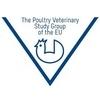Correlation of immune foundation and health status with genetic expression
Published: June 5, 2015
Source : Matthias Voss (Veterinary Laboratory of Lohmann Tierzucht)
Disease control in poultry production is based on several factors of which some are in the hands of the poultry producers, farmer and responsible veterinarian, like disease monitoring, diagnosis as well as disease prevention by implementing bio-security and optimal protection by vaccination.
Eradication of certain pathogens, especially those being vertically transmitted, is essential for breeding companies to ensure delivery of healthy day-old chicks to their customers. Since decades most of the primary breeders companies have eradicated Avian Leukosis virus from their pedigree populations. Freedom of Mycoplasma gallisepticum and Mycoplasma synoviae, Egg Drops Syndrome and (any type of) Salmonella is another prerequisite for successful poultry breeding. Widespread diseases like Avian Encephalomyelitis and Chicken Anemia Virus are controlled by vaccination in order to prevent vertical transmission and to provide maternal protection.
Selection for disease resistance is exclusively in the hand of the primary breeder companies. The best known model for disease resistance in poultry is resistance against Marek’s Disease. As resistance to Marek’s is based on many different components of the chicken genome, complete resistance against Marek’s is unlikely to be achieved. But many studies were able to demonstrate varying levels of resistance in different chicken line and also different response to vaccination.
Peripheral neuropathy (PN), a disease condition described in white leghorn chickens of various breeds with similar clinical signs like the nervous form of Marek’s, is another example. With PN 1-3% affected birds during week 6-8 of live may be seen. Clinical symptoms are paralysis and during post mortem examination swollen nerves but no tumors could be seen. Most probably no Marek’s virus is involved in the condition and there is also no protection from various methods of Marek’s-Vaccination. PN seems to be a kind of „Autoimmune” disease with increased susceptibility of certain MHC/B blood groups. Primary cause is a demyelinisation of peripheral nerves which is associated with the blood group B19, whereas birds with blood group B21 show a higher resistance against the condition. Genetic selection by eliminating the population of B19 carrying birds has wiped out the problem in the field.
Despite a moderate heritability for E. coli resistance, in contrast to PN it is difficult to create genetic progress in E. coli resistance by conventional genetic tools because recording of phenotypes is difficult and due to animal welfare aspects cannot be applied to high numbers of hens.
Identification of genes that influence E. coli resistance and genomic selection has the advantage, that no more challenge tests are necessary and the results are available already at young age of the selection candidates. But preliminary results indicate that there is low to medium genetic variation for E. coli susceptibility.
Amyloid Arthropathy (AA) is a condition especially in brown layer type chicks observed over the last twenty years. Enterococcus faecalis is a bacterium frequently related with and isolated in field cases of amyloid arthropathy. It is therefore associated with avian amyloidosis. Varying susceptibility of lines and families has been demonstrated and research for genetic markers is ongoing.
Breeding for overall vitality is associated with low heritability; therefore hygiene, bio-security and vaccination are much more important tools in disease prevention.
Content from the event:
Related topics:
Mentioned in this news release:

Recommend
Comment
Share

Would you like to discuss another topic? Create a new post to engage with experts in the community.













